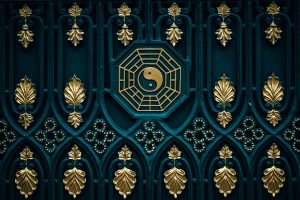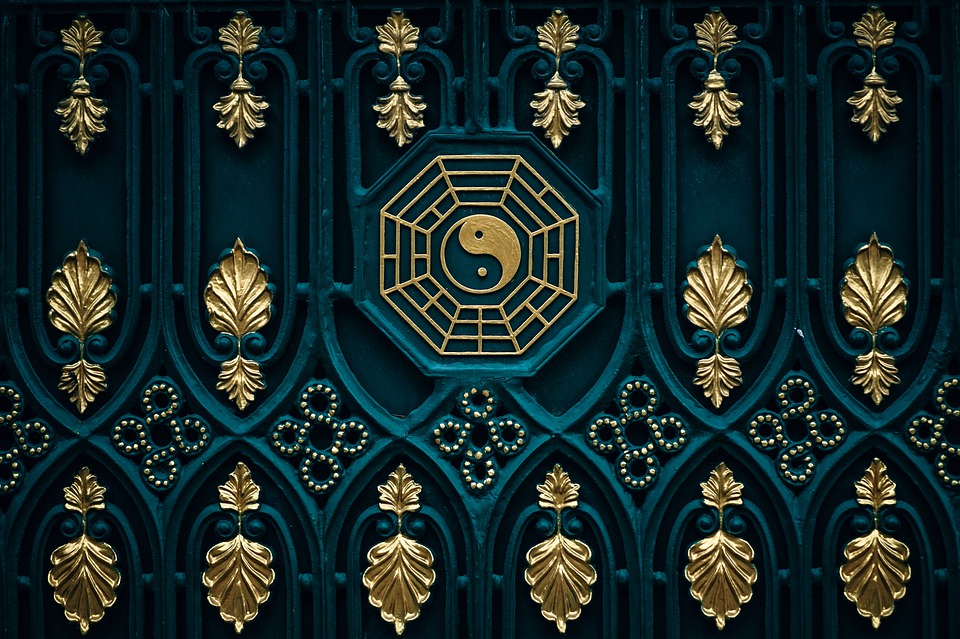Asian Interior Design
Cultures of nations are as diverse as flora and fauna in a rain forest. Each leaf and blossom has distinct colors and patterns. When merged together with other cultures, though they differ in characteristics, they bring about a chaotic diversity that evolves into harmony as time fuses their dissimilarities and people eventually perceive them as a unified creation. When you belong to a particular culture and you explore others of far off nations, you are inclined to compare and ponder on what you have that they don’t and what they have that you don’t. You entertain the notion that perhaps, learning about another way of life will bring you closer to understanding that which is unknown to you and seeing the beauty in the foreign and the unfamiliar.
If you are a part of the Western tradition and you happen to glimpse upon the different world found on the eastern hemisphere of the globe then there’s a slim chance that you will be able to miss its captivatingly bold and rich cultural identity. You hold your breath with awe when you look at a page of an architectural magazine showing a velvety red opium bed within a strangely extravagantly detailed oriental interior. You find it exquisitely beautiful and the profound aspect about that is, it is entirely different from what you have at home. This image refreshes your curiosity and you want to know more about it. Well then, permit yourself to marvel at the alluring splendor of oriental indoor elements coming together more commonly known as Asian interior design.
The characteristics of Asian interior design came about after nations in the east merged collectively with their different flavors interspersing with each other. Cultures of China, Japan, Thailand and other Asian countries combined and each of them came up with their own design concoctions. They allowed the influence of religion, arts and national heritage to shape the general designs of their interior structures and architecture.
Chinese Interior Design Elements
Chinese people with their firm devotion in their beliefs and their inherent inclination to commerce and trade permitted the artistic persuasion of other nations such as India and Japan in their religion, culture and architecture. Buddhist and Hindu temples are scattered everywhere in China. Their interior styles and plans have been adapted by residential and commercial buildings. This development gave way to Chinese designs with heavily detailed interior elements and grand plays of colors that are vividly opulent and aesthetically pleasing. They cannot be mistaken for any other interior design style because of their unique Chinese elements that are consistently applied throughout the interiors.
Famous Chinese motifs like the pagoda, scrolls and dragons are applied to the major design elements such as the paintings on the walls and stylized scrolls in the ceilings, as well as the accessories in their interiors. The furniture pieces are likely to be ornate with fretwork or floral carvings on the chair legs, the sides of the tables especially on the sides and façade of a traditional Chinese four poster bed. Furniture finishes and decorations varies from lacquer, mother of pearl and gold leaf applications. One or two of these furniture pieces, a yoke back chair perhaps, or a black lacquer console table with hand-painted floral design, is all you need to bring that Oriental touch to your contemporary abode. Do remember red as the lucky color in Chinese traditions and apply them moderately in a wall, in lighting fixtures or in throw pillows. You cannot neglect the effect of accessories such as gold leaf mirrors, Ming vases, and porcelain jars to replicate a distinctly Chinese-Asian interior style. It is also of utmost importance that you will always be guided by practical feng shui interior design principles for a harmonious flow of positive energy in your own home.

Japanese Style in Interiors
Japanese style is one of the most prominent aspects of Asian interior design. It differs from the elaborate Chinese style in the sense that Japanese culture dictates an inclination to simpler lines and forms in their interiors rather than curvilinear shapes and a potent indulgence in bright colors. Straight lines are abundantly distributed throughout the space with a linear flow of indoor architectural planning, quadrilateral rooms and shoji screen details in doors and windows. It follows that the colors in a Japanese interior are suppressed to achieve a cohesive appearance. They do not shock and over-stimulate the senses lest they deviate from the goal of retaining austere grace. The outdoor gardens with gently moving or even still water features are characteristically Japanese. They evoke quietude and a soothing atmosphere conducive to restful activities and disciplined movements around the house.
These design elements can be adapted to contemporary interiors through the use of shoji-inspired sliding glass doors with crisscross pattern and spherical white lanterns as pendant lighting fixtures. You can uplift the monotony by adding a big red jar or a glossy lacquered armoire with simple carvings for accents. For your patio, you could incorporate the Japanese gardens by placing a pocket water feature on one corner and uneven shrubbery on the other.
Thai Inspired Design Features
The design elements of Thai interior design are influenced by Thailand’s ideal geographical location and one of the most dominant religions of the country, Buddhism. Thailand boasts of sprawling white beaches hence the visibility of tropical elements in their interiors. You could instantly be transported to the sandy beaches lined with coconut trees dominating the shoreline. The design is not a singular one in the sense that an interior can be totally light and with subtle hints of detail and it can also be quite dramatic with colors and fabrics intermingling and intricate detailed patterns in the furniture severely applied. It will depend on the amount of Thai elements that will be infused to the interior. There’s a sense of duality to the design that can be somewhat misleading for an unfamiliar eye. Even in the colors, this inconsistency is visible. One Thai interior can have entirely tropical colors such as browns and greens and the other can have striking sunset oranges and brilliant reds that depict oriental design.
The furniture pieces and accessories owe much of their artistry to Chinese design. Yoke back chairs with silk seat cushions and a sculpture of Buddha find their way in Thai interiors quite naturally. Thai design also shares similar features with Indonesian design because both hail from countries with the same geographical qualities. They embrace the tropical elements and focuses on how to incorporate the outdoor ambiance with the indoor. Thai design pays very close attention to detail. Perhaps, that is the most evident characteristic of its interiors and furniture pieces. The ceilings are either, triangular and open following the geometry of the roof with flat slanting beam details or smoothly leveled with horizontal and vertical beams in a crisscross pattern. The white walls are left bare, save for a few wall hanging décor and paintings, to emphasize the detail of the windows and carvings of accent wall and ceiling borders. The flooring materials used are hardwood planks and wood parquet. The furniture pieces are mainly of rattan and teak wood. The sofas are made of hardwood and they are padded with over-sized seat cushions with colorful throw pillows and fabrics to create that luxuriously soft yet very vibrant look. The four-poster beds with simple carvings are adorned by matte white canopy that meets in the middle. Armchairs, coffee tables and dining furniture sets are made of teak wood but nowadays, they use all kinds of indigenous materials like rattan, Capiz shells, natural fabric and bamboo. Designs of Thai furniture pieces and accessories are evolving to suit needs and preferences of contemporary times.
Indonesian Design Meets Modernity
Indonesia as a peninsula bequeaths enchanting tropical islands that pride themselves for their abundant natural resources such as white sand beaches and interesting native materials for construction and crafts. Bali as one of these well-endowed islands developed an interior design style which showcased distinct and basic elements. They derive their construction and furniture materials from objects found in nature such as wood, clay, metals and other rich indigenous leaves, stalks and fibers from trees and plants. Balinese design elements are often used to decorate spas and resorts. The elements when fused together bring about a breezy and simply tranquil ambiance. The colors for the interiors consist of neutral hues such as beige, sand, off-whites and browns. Greens such as lime and olive are scattered in silk fabric throws, pillows and the occasional plants that are displayed. Interiors in the Balinese style tend to look very light and airy. Doors and windows have simple horizontal and vertical lines. They are not bulky and heavily covered with moldings and carvings. The display of plain white walls with huge trunks of trees for the pilasters, an accent wall with detailed carvings or cutouts and soft translucent off-white curtains swaying as the wind blows remind you of a rejuvenating vacation on the beach.
The furniture pieces and accessories, similar in Thai interiors, are mostly made from teak wood, rattan and other native materials. Wood furniture pieces such as tables, chairs and beds tend to look sturdy and have clean straight lines with minute detailing. Wicker furniture and accessories made of rattan are also used to balance the smooth textures of the other furniture and interior elements. The coffee tables are mostly low in height and are surrounded by large pillows as seats when tea is served. Arts and crafts like weaved baskets and fabric, creative pottery and sculptural ornaments are used in the interiors. There are also religious and tribal artifacts and crafts that are distributed throughout Balinese houses and hotels. New interior design trends have updated the look of these furniture pieces and accessories, made them more streamlined and of world-class quality for local and international hotels and resorts. They are also importing to foreign countries to cater to residential and smaller commercial establishments like restaurants and spas.
